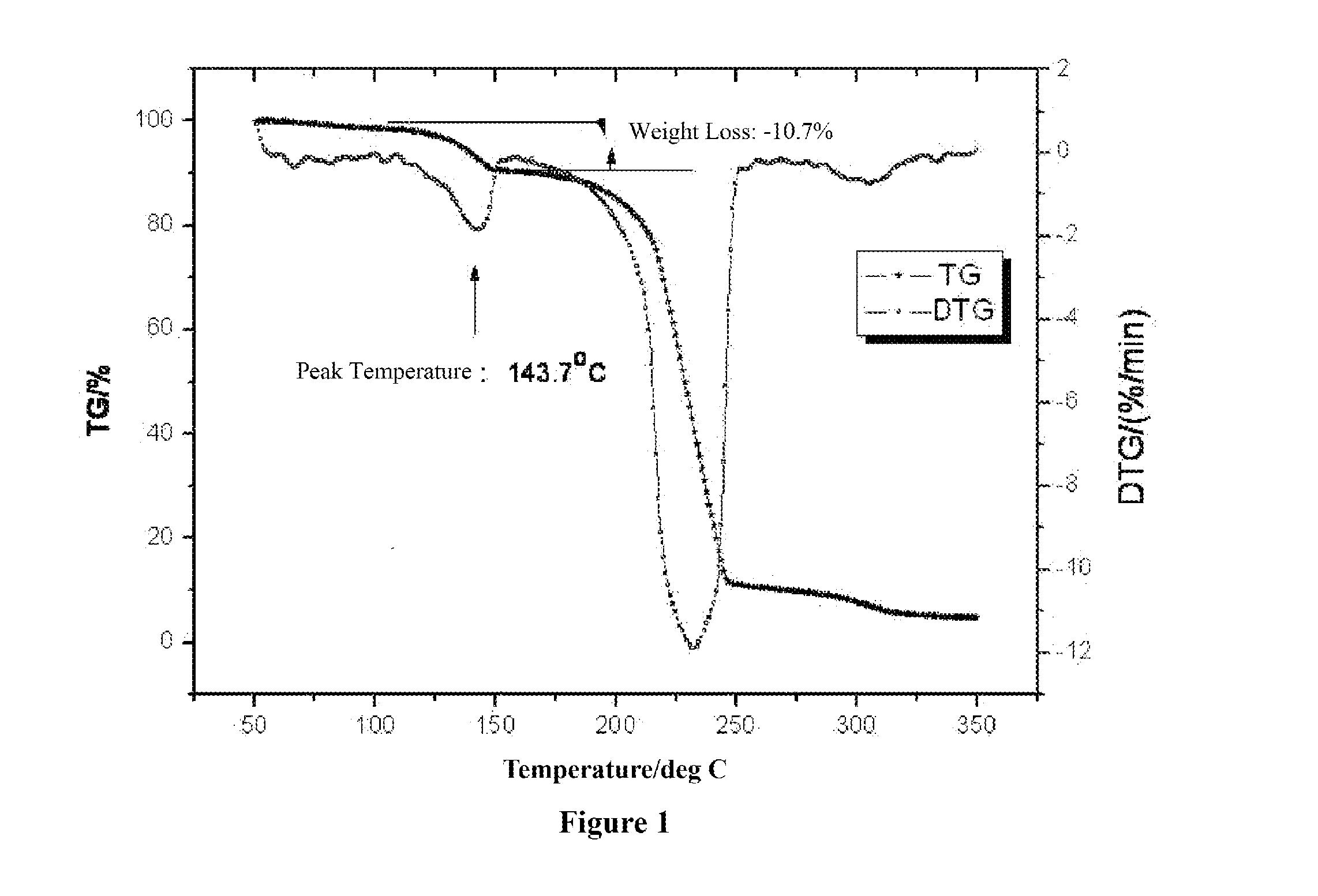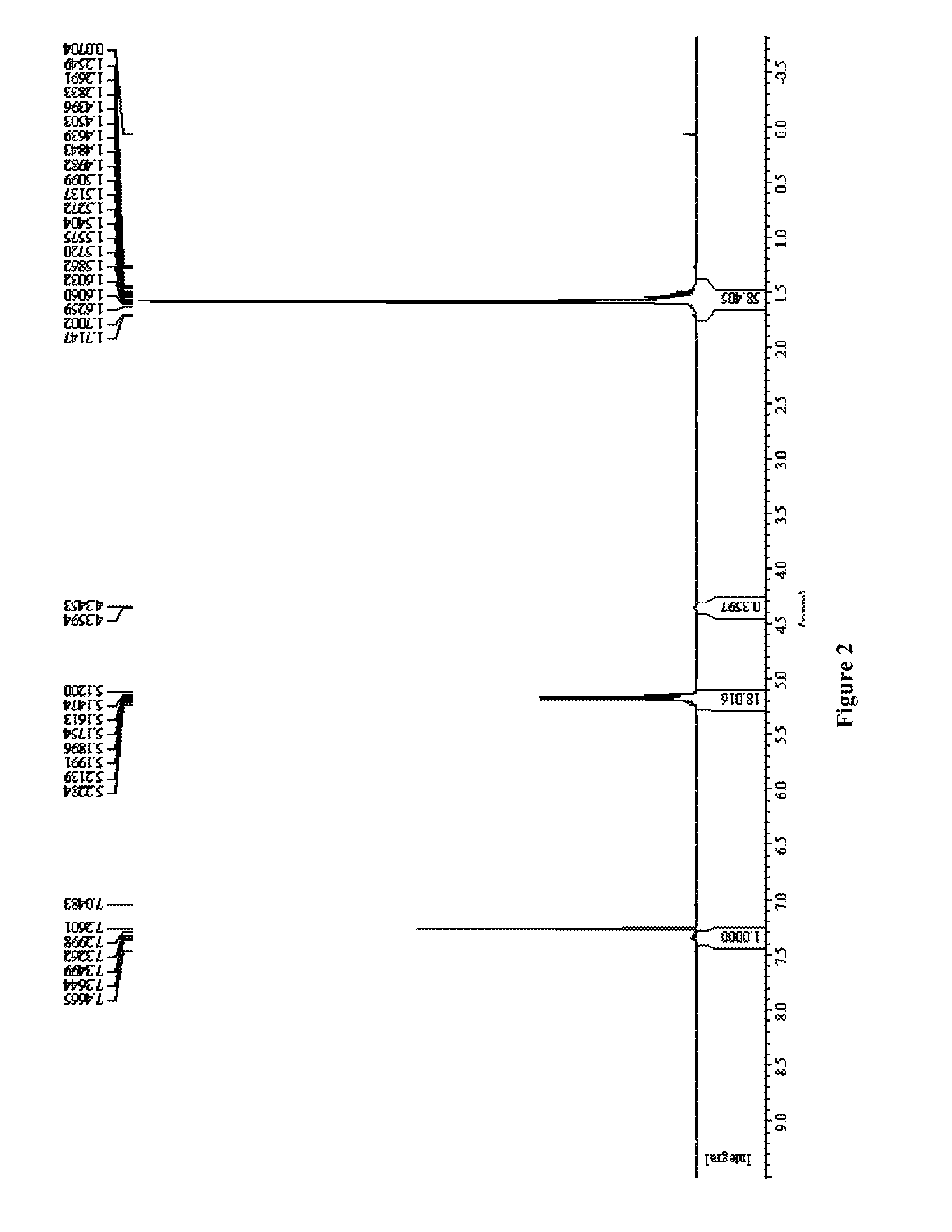Ring-opening polymerization of cyclic compounds catalyzed by carbene derivatives
- Summary
- Abstract
- Description
- Claims
- Application Information
AI Technical Summary
Benefits of technology
Problems solved by technology
Method used
Image
Examples
example 1
[0127]1,3-bis(2,6-diisopropyl-phenyl)imidazole-2-carboxylic acid salt (29 mg, 75 μmol), benzyl alcohol (5.4 mg, 50 μmol), ε-caprolactone (1.44 g, 10 mmol) were dissolved in 10 mL of xylene. The solution was heated under the protection of the N2 to 140° C., and reacted for 3 seconds. Formic acid was added to terminate the reaction. The reaction solution was added into methanol. The precipitate filtered and dried to a constant weight, getting 0.8 gram poly ε-caprolactone. The conversion rate was 72%. The number average molecular weight Mn was 19,000. The polydispersity index PDI was 1.06.
[0128]The structure of the catalyst and the structure of the cyclic compound are as follows:
example 2
[0129]1,3-bis(2,6-diisopropyl-phenyl)imidazole-2-carboxylic acid salt (108.07 mg, 250 μmol), benzyl alcohol (5.4 mg, 50 μmol), L-lactide (0.72 g, 12.5 mmol) were added into a reaction vessel, heated under the protection of the Ar to 130° C. The reaction in the molten mixture was carried out for 30 minutes. The reaction was terminated by adding water. The reaction mixture was dissolved in chloroform and then added into ethanol. The precipitate was filtered and dried to a constant weight, obtaining 0.6 g of poly L-lactic acid. The conversion was 89%. The number average molecular weight of the polylactic acid Mn was 29,000. The polydispersity index PDI was 1.15.
[0130]The structure of the catalyst and the structure of the cyclic compound are as follows:
example 3
[0131]1-butyl-3-methylimidazolium-2-carboxylic acid salt (18.21 mg, 100 μmol), n-butanol (7.41 mg, 100 μmol), 3,6-dimethyl-1,4-dioxane-2,5-dione (5.72 g, 40 mmol) were added into a reaction vessel. The reaction vessel was under vacuum at a pressure of 7 mmHg. The reaction was carried out at 50° C. for 3 hours. The reaction was terminated by adding hydrochloric acid. The reaction mixture was dissolved with dichloromethane, then added into ethanol. The precipitate was filtered and dried to a constant weight, obtaining 3.6 g of white poly-3,6-dimethyl-1,4-dioxane-2,5-dione. The conversion was 65%. The number average molecular weight of the polylactic acid Mn was 36,000. The polydispersity index PDI was 1.34.
[0132]The structure of the catalyst and the structure of the cyclic compound are as follows:
PUM
| Property | Measurement | Unit |
|---|---|---|
| Temperature | aaaaa | aaaaa |
| Temperature | aaaaa | aaaaa |
| Temperature | aaaaa | aaaaa |
Abstract
Description
Claims
Application Information
 Login to View More
Login to View More - R&D
- Intellectual Property
- Life Sciences
- Materials
- Tech Scout
- Unparalleled Data Quality
- Higher Quality Content
- 60% Fewer Hallucinations
Browse by: Latest US Patents, China's latest patents, Technical Efficacy Thesaurus, Application Domain, Technology Topic, Popular Technical Reports.
© 2025 PatSnap. All rights reserved.Legal|Privacy policy|Modern Slavery Act Transparency Statement|Sitemap|About US| Contact US: help@patsnap.com



